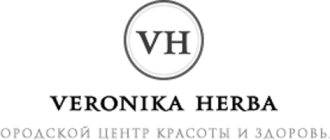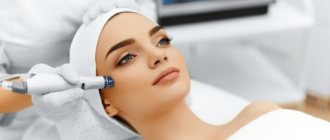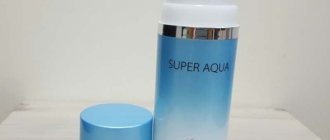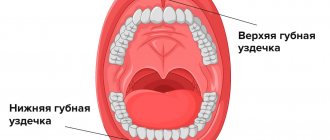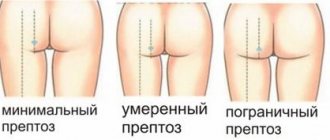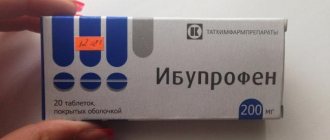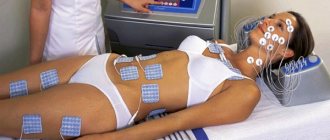Lipofilling is an operation to change volumes or contours using the patient’s own adipose tissue, which in this case acts as an alternative to other materials (silicone or fillers). The procedure is safe, low-traumatic and effective.
With the help of such a correction, it is possible to eliminate various aesthetic defects, including loss of skin elasticity, unevenness and asymmetry of shapes, and insufficient volume of any part of the body. The working areas for the operation are quite extensive: fat cell injections are carried out on almost the entire body, from the face to the legs.
The advantages of this operation include good aesthetic results with no risks of rejection or allergies, since from the body’s point of view, the body’s own fat cells are not something foreign. However, how long lipofilling lasts—or rather, its results—depends on the patient’s attitude toward body care during the rehabilitation period.
Indications and contraindications
Correction is indicated in the following cases:
- insufficient volumes,
- need for contouring
- asymmetry,
- loss of skin elasticity,
- the appearance of wrinkles,
- retracted scars (injuries, injections),
- other types of deformations.
With the help of fat cells, they enlarge the breasts, shape the buttocks, add volume to the lips and cheekbones, smooth out the surface of the neck and more. Injections of adipose tissue are a safe and at the same time effective method of augmentation and correction.
Despite its safety, this type of correction has contraindications. People with diabetes, cancer, chronic disease in the acute stage or acute infection will not be allowed to undergo surgery. Intervention is difficult or prohibited in patients with a shortage of donor tissue. Pregnant and breastfeeding women will also be exempt from surgery. Otherwise, the procedure has no contraindications, as well as no restrictions on gender or age (with the exception of children under 18 years of age).
The operation is effective for highlighting cheekbones, enlarging lips, eliminating nasolabial folds, and so on.
Possibilities of facial lipofilling
Lipofilling is used both as an independent rejuvenating procedure and in combination with other methods of aesthetic correction of appearance. Including in combination with other plastic surgeries (facial plastic surgery, blepharoplasty, breast augmentation, etc.). During plastic surgery, it is necessary to recreate the lost volume so that the face does not look “flat”, overtightened or skeletal. Corrective lipofilling gives a natural appearance and rejuvenates the skin. In young patients, lipofilling replaces cosmetic procedures using filler and provides a lifelong effect.
- Chin and cheekbone correction
- Facial contouring
- Volumetric facial rejuvenation
- Neck lipofilling
- Lipofilling of the nasolacrimal groove, upper and lower eyelids
- Lipofilling of nasolabial folds
- Lipofilling of lips
- Lipofling of the chest, dorsum of the hands, legs, buttocks
- Scar lipofilling
How is the operation performed?
During correction, the surgeon follows a predetermined technique. Several small punctures are made in the donor areas, after which fat cells are collected using a special instrument. Next, the adipose tissue goes through purification from foreign impurities. The prepared material is introduced into the working area through thin cannulas, also through small punctures.
The operation is almost always performed under general anesthesia. Sedation is also used. The duration ranges from half an hour to four hours, depending on the complexity and volume. After completing all the manipulations, the surgeon applies sutures and a fixing bandage to the punctures. The patient remains in the hospital for a short period of observation and is then discharged home.
Lipofilling: cheekbone augmentation with your own fat
If contouring is a cosmetic procedure, then lipofilling is a plastic surgery, albeit a gentle one that does not leave visible marks. A plastic surgeon performs lipofilling of the cheekbones. The operation takes place in three stages. All manipulations are carried out under local anesthesia; as a rule, there is no need for anesthesia.
At the first stage, the plastic surgeon takes adipose tissue for subsequent transplantation. The source of fat cells is an area of the body with good development of subcutaneous tissue. As a rule, the anterior wall of the abdomen, buttocks or thighs is used as a donor. The plastic surgeon removes fat cells using gentle water-jet liposuction, which does not damage blood vessels and allows you to obtain intact, viable cells.
At the second stage of the operation, the material is sent to the laboratory. In the laboratory, fat cells are cleaned of impurities (liposuction solution, blood, dead cells) and saturated with growth factors, which improve graft survival in the correction area.
The third stage of the operation is the introduction of a fraction of viable cells into the tissue of the correction zone, in this case, in the area of the zygomatic eminence. To do this, the plastic surgeon uses the injection method. Fat is injected through atraumatic cannulas with a blunt end, without incisions. Tissue trauma during surgery is minimal. Complications are excluded; minor side effects such as hematomas and swelling of the recipient area disappear within a few days.
The advantage of the operation is a lasting and most natural result. Lipofilling allows you to achieve a uniform increase in cheekbones. The face after surgery looks harmonious and proportional. Fat cells integrate into the tissue architecture, do not cause inflammatory reactions, and do not provoke an immune response. The result lasts for many years, which distinguishes this technique favorably from contour correction.
Another advantage of lipofilling is its anti-aging effect. The cheekbone correction procedure triggers the processes of self-healing and renewal of the tissues of the middle third of the face. A rejuvenating effect is achieved due to the fact that the fat graft contains many stem cells; in addition, before transplantation, it is enriched with growth factors that stimulate the regeneration process at the cellular and tissue level.
Recovery duration
Since the operation is minimally traumatic, the rehabilitation period does not last long. At first you cannot:
- wet the puncture sites,
- exercise,
- be exposed to physical activity,
- visit a bathhouse or sauna,
- take hot baths,
- eat a lot of salty or spicy foods,
- smoking,
- go to the solarium,
- stay in the open sun without protection.
The timing of tissue healing, swelling and bruising is individual for each patient, so it is difficult to give an exact duration of rehabilitation. Various physiotherapy procedures (microcurrents, magnetic therapy) can speed up recovery. You can stimulate the reduction of swelling and bruising with the help of drugs such as heparin ointment or Traumeel.
At this time, it is extremely important to follow all the recommendations of your surgeon and not violate the prohibitions. You also cannot prescribe treatment for yourself: taking any medications or attending procedures without the consent of your doctor is prohibited.
Possible consequences and complications
In most cases, lipofilling of the cheekbones is well tolerated by patients. However, after such a procedure, the occurrence of side effects and complications cannot be ruled out.
More common consequences include swelling and small hematomas. This condition is considered normal, can last up to 12 days and goes away on its own. Swelling in some cases can last for several weeks.
Also, the sensitivity of the skin in those areas into which adipose tissue was injected may temporarily decrease.
Facial lipofilling
Facial lipofilling is a plastic surgery that allows you to correct contours using the patient’s own fat.
In addition, some clients experience asymmetry and unevenness.
In extremely rare cases, complications such as pain, swelling, redness that persist for a long time, infection accompanied by suppuration, the formation of granulomas, seroma, hyperpigmentation, and fat embolism may occur.
How long does the effect last?
It is very difficult to calculate the exact period for maintaining the final effect. This is influenced by a large number of different factors, and not all of them are within the control of the patient or the doctor. For example, there are genetic characteristics due to which fat is absorbed faster - in such patients the time frame will be shorter.
However, if the patient has a competent attitude to the recommendations, prescriptions and prohibitions, as well as taking into account individual characteristics, the average period is two years or more. For example, if you calculate how long facial lipofilling lasts, you can estimate a period of two to five years with high-quality rehabilitation. It should also be noted that if injections are not given for the first time, the result will last longer and be more stable.
The result is great aesthetics for years to come.
Preparation
To achieve the desired result, you need to properly prepare for the procedure. First, the patient must visit a specialist who will conduct an examination, assess the condition of the skin and determine the scope of work. To exclude the presence of contraindications, laboratory and instrumental examinations are prescribed.
Why can our articles be trusted?
We make health information clear, accessible and relevant.
- All articles are checked by practicing doctors.
- We take scientific literature and the latest research as a basis.
- We publish detailed articles that answer all questions.
If there are no restrictions on performing cheekbone lipofilling, then the cosmetologist models the cheeks and cheekbones on a computer, which allows you to visualize the result that the client expects.
Also at this stage, it is necessary to determine the sites for taking fat tissue for transplantation and calculate the amount of fat that will be required for correction.
To track the results, photos must be taken before and after the procedure.
Fat transfer to the arms
Fat transfer into the arms is called lipofilling.
To eliminate the risk of complications, during the preparatory period patients must adhere to certain recommendations given by the doctor.
At least 2 weeks before the expected date of the manipulation, you must stop taking medications that affect blood clotting. This will minimize the likelihood of bleeding.
The last meal should be 6-8 hours before the correction.
Is breast volume maintained?
Breast augmentation surgery using your own fat is also quite safe and effective. Correction is indicated if there is a sufficient amount of fatty tissue on the body. Fat injected into the breast is approximately halved in size, so initially the injections contain more volume than necessary. The technique has only one drawback - it is impossible to increase the bust by more than one to one and a half sizes due to the physiological characteristics of adipose tissue.
In the case of breasts, the situation is quite favorable. After lipofilling, the effect lasts for a very long time. The cells in which the new vascular network has formed remain forever. But in this case, it is strictly not recommended to change your weight, especially to lose weight, since fat in the chest is absorbed. Accordingly, the correction effect is reduced to zero.
Malarplasty: cheekbone augmentation with implants
Lipofilling has an objective limitation to its use: in a patient with a low percentage of body fat, it is difficult to obtain the required number of fat cells due to the poor development of subcutaneous tissue. In such a situation, a full-fledged plastic surgery may be recommended - cheekbone augmentation with implants.
The implant can be a silicone prosthesis or the patient's own cartilage tissue. Each option has its own advantages and disadvantages. If a silicone implant is used during cheek surgery, a protective shell of fibrous tissue may subsequently form around it. However, it does not affect the aesthetics of the cheekbones and face as a whole.
A cartilage implant (a fragment of the patient’s own cartilage tissue) is completely immunologically compatible with tissues, but cartilage is susceptible to the action of enzyme systems. In rare cases, partial resorption (destruction by enzymes) of the implant occurs, which can have a negative impact on the aesthetic result of plastic surgery. Due to the high percentage of resorption, surgeons abandoned the use of autologous bone grafts.
What there can be no doubt about is that after the operation there will be no visible marks left on the face. There will be no scars on the skin, since the plastic surgeon places the implants through incisions in the oral mucosa. The mucous membrane has the highest regenerative potential, recovery is fast. The wound heals in a few days. In the early rehabilitation period, it is enough to strengthen oral hygiene measures, avoid solid foods, hot or cold dishes and drinks.
Results of surgery on the buttocks
In the gluteal region, fat injections can cope with completely different deficiencies. Of course, the most common request is to increase volume and give shape. But with the help of surgery you can also correct the surface (for example, depressions), remove asymmetry and much more.
When talking about how long lipofilling of the buttocks lasts, you can name periods from three years to a lifetime. As in previous cases, the result and duration of the effect depends on many factors - genetics, following recommendations, and so on. Losing weight negatively affects the final aesthetics. Therefore, it is advisable to lose weight before having surgery. Sometimes repeated intervention helps to consolidate the results - after that the result remains forever.
Recovery results after lipofilling
Best materials of the month
- Coronaviruses: SARS-CoV-2 (COVID-19)
- Antibiotics for the prevention and treatment of COVID-19: how effective are they?
- The most common "office" diseases
- Does vodka kill coronavirus?
- How to stay alive on our roads?
After lipofilling, swelling and bruising may appear, which disappear after a couple of weeks. Their manifestation directly depends on the area and magnitude of the actions taken. To hide these unpleasant moments, it is enough to use disguise (glasses) and cosmetics.
The visible effect will be noticeable just a week after the plastic surgery, when tissue swelling completely disappears, and after two months all engrafted tissues are completely restored, the injected fat is overgrown with capillaries and gradually acquires all the necessary nutrition for natural existence. To make the rehabilitation process go a little faster, you can use PRP plasma lifting.
Lipofilling is the least risky and low-risk method of plastic surgery, but nevertheless, it is strictly prohibited for people who have diabetes or have circulatory disorders, since with these ailments, adipose tissue, unfortunately, dies right at the time of transplantation.
